
In the small world of British climbing, it's easy to assume that you know of everyone and their exploits, especially in your local area. A climber's achievements, projects, favourite climbing brands and even what they eat for breakfast can easily be discovered if you follow them on Facebook.
There are, however, a number of unsung heroes operating below the social media radar; not only climbing cutting-edge grades but also venturing into the unknown, putting up new routes and discovering untouched rock in all corners of our tiny island and further afield. Their obsession for new areas and routes draws them away from the populated hives of climbing walls and honeypot crags. Instead, they quietly work in isolation, dedicating hours of time to developing new climbs that may never see a second or third ascent.
For the Unsung Hero or Heroine, recognition of their efforts is rarely sought and seldom gained. The spirit of new-routing could be viewed as simultaneously selfish and selfless; at once rejecting the established status quo and seeking out a new challenge that can be either relished alone, or shared with others. Whatever their motivation for doing so, their efforts add to the history and character of an area.
Simon Richardson is 56 and lives in Aberdeen with his wife Christine. They have two children, Ben and Suzy (who are in the process of leaving the nest), and two cats. Simon is the founder and editor of the popular website scottishwinter.com and has over 600 Scottish winter and over a dozen Alpine first ascents to his name to date, spanning his 35-year climbing career. In addition to his outstanding personal climbing endeavours, Simon has dedicated time and effort to making Scottish winter climbing more accessible to the wider community, through developing classic areas such as Aonach Mor, introducing the Scottish two-tier winter grading system, pioneering modern mixed climbing on Ben Nevis, including establishing the popular Darth Vader (VII,7) and Babylon (VII,7), and authoring the Scottish Mountaineering Club’s climbers’ guide to Ben Nevis.
'For me, climbing is as much a mental challenge as it is a physical one. I enjoy figuring out a difficult crux on the lead, but I also like unravelling the geography of a mountain and understanding where existing routes are, and where future ones may go.'
His most recent achievement took place in July, in the form of a new route on the South South-East Face - AKA Tronchey Wall - of the Grandes Jorasses, namely Diamond Ridge (1600m, 5c, AO).
A former engineer in the oil industry, Simon has for many years fulfilled the description of a 'weekend warrior,' using his time wisely and not letting letting a demanding career detract from his climbing. Over the past year, his circumstances have changed with a shift in focus. I investigated Simon's lifetime of lesser-known achievements, his contributions to the climbing community - which are surely worthy of more recognition - and his thoughts on the state of Scottish Winter and British Alpine climbing...
Until last year I worked for BP – initially as an engineer and then later as a manager. I had a fulfilling career that led up to looking after the Clair oil field, which is the largest in Europe. It was an exciting and influential role – other industry colleagues commented that it was one of the best jobs in the North Sea. Then, 18 months ago I realised I was trying to do too much – managing a large team at work, being a husband and father, writing a book, running my blog and also trying to go climbing – and something had to give. So 12 months ago, after some careful thought, I decided to leave behind the oil industry and spend more time climbing and writing.
Trevor Southall, my Maths teacher at school, first took me climbing to the Roaches when I was 15. I was enthralled – I knew instantly that climbing was something I wanted to do. Another teacher, Roger Smith taught me more skills and organised a trip to the Alps when I was 17. I first climbed on Ben Nevis when I was 18 – and I promised myself that one day, I would live in Scotland so I could have winter climbing on my doorstep. I studied Engineering at Oxford University, which has a strong mountaineering tradition with people like Lindsay Griffin, Stephen Venables and Roger Everett as alumni. Alpine climbing was a natural progression, and I was soon working my way through the alpine classics.
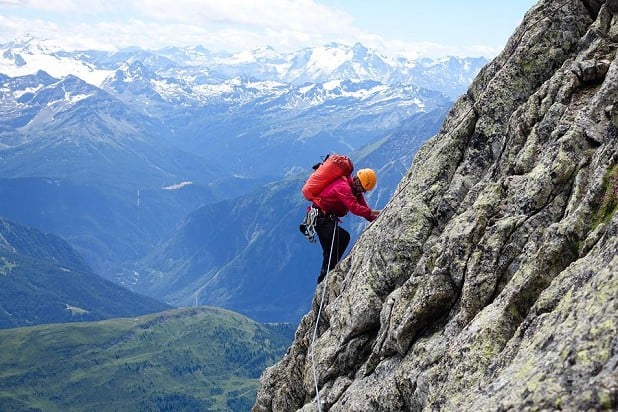
Gervasutti has been a big influence in my climbing. I like the way this brilliant 1930s Italian alpinist ploughed his own furrow and made some futuristic ascents. After climbing the Gervasutti Route on the East Face of Grandes Jorasses (probably Gervasutti’s greatest climb) when I was 22, I set about repeating all his major alpine routes in the 1990s.
In Scottish winter climbing, the standout figures to my mind are Raeburn, Patey, Marshall and Nisbet. I remember reading an article by Andy Nisbet on the first winter ascent of The Link on Lochnagar when I was at Oxford. This made a huge impression on me and opened my eyes to Scottish mixed climbing. I climbed frequently with Roger Everett in Scotland, the Alps and the Himalayas early in my career and Roger taught me an enormous amount about the mountains. Roger is still climbing strong and it sends a tingle down my spine when we go climbing together!
Probably the most fulfilling winter climb I have ever done is the first winter ascent of The Link Direct (VII,7) on Lochnagar. I climbed it with Chris Cartwright in 1998. This is Cairngorms mixed at its finest, but more importantly, I had finally climbed the feature that had inspired me to take up Scottish winter climbing after reading Andy Nisbet’s article 20 years before!
I now find it less stressful to climb a new route than an existing one. I don’t have to worry about a guidebook description or grade, I can just do my own thing. I seem to climb far better when I’m on new ground. The stakes are higher I guess, and I have to concentrate more. And I just love looking around new corners! For me, climbing is as much a mental challenge as it is a physical one. I enjoy figuring out a difficult crux on the lead, but I also like unravelling the geography of a mountain and understanding where existing routes are, and where future ones may go.
I set myself a target of climbing 50 new Grade VII (or harder) new routes by my 50th birthday. At the start of the 2010 season I just had two more to do, but I had an outstanding season climbing ten new VIIs or VIIIs on consecutive weekends. The finest routes were climbed with Iain Small - Integration (VIII,8) on Minus One Buttress on The Ben, and Danger Mouse (VII,7) on Creag an Dubh Loch’s Central Gully Wall. I was very happy – I had dreamed about winter climbing on these very special cliffs for many, many years.
My goal is to communicate what is going on in the Scottish winter climbing world in an objective and informative way. I’ve been Scottish winter correspondent for High and then Climb magazine for over 25 years, so scottishwinter.com was a natural progression. I had all the contacts in place and people naturally come to me with their news. The site is deliberately non-commercial and I think climbers appreciate that. My old school teacher Roger Smith always insisted that it was important to put something back into climbing, so in a small way, I think I’m doing that with scottishwinter.com. On a personal level it is enormously exciting to be communicating with climbers who are operating at the cutting-edge.
'There is no question that today’s cutting-edge Scottish winter routes are comparable with the hardest on sight routes being climbed elsewhere in the world today.'
Having limited time brings extraordinary focus! I was a weekend warrior until twelve months ago when I stopped work. Just climbing on Sundays was the only way I could juggle climbing with a career and family. Most summers I would make a two-week trip to the Alps (or further afield). Unlike rock climbing, you can go winter climbing when it is precipitating. To go rock climbing in the Scottish hills it needs to be warm and dry, often for several days beforehand. Winter climbing conditions are far less exacting – provided you are flexible and go to the right place of course!
The Scottish hills are tiny mountains on a world scale, but Scottish climbing has led the world at various times – Raeburn in Green Gully in 1906, Smith and Marshall on Orion Direct in 1960, Nisbet and MacLean on The Needle in 1985 are some examples. There is no question that today’s cutting-edge Scottish winter routes are comparable with the hardest on sight routes being climbed elsewhere in the world today.
Nowadays, the routes climbed on sight by the likes of Greg Boswell, Iain Small, Guy Robertson, Nick Bullock and Dave MacLeod are world class. Ten to fifteen years ago, traditional winter climbing (not just in Scotland, but worldwide) was put under tremendous pressure by bolt protected dry tooling and mixed climbing. The technical standards of M climbs far exceeded Scottish routes, and several prominent climbers pointed out that Scotland had fallen far behind. There was huge pressure to redress this balance by putting up bolt-protected winter routes in Scotland. It was a difficult time, and I remember Christian Beckwith (editor of the American Alpine Journal at the time) saying it was “up to you to keep the flame alive." The ‘you’ was a collective you referring to Scottish winter climbing in general, and I’m glad to say that we resisted the temptation to bolt and stuck to our ethical roots.
As climbers embraced the new tools and techniques and then began to apply them to ground up Scottish winter ascents, standards and confidence rose. Scottish winter climbing has become an increasingly desirable destination for the world’s best climbers who eagerly embrace our ethics and style and see Scottish winter as something completely different, and perhaps even more fulfilling, than mixed climbing. I think the ground up Scottish ethic is running so strongly now that I don't see abseil inspection or pre-protection becoming commonplace.
'The strongest and most technical climbers do not necessarily climb the hardest routes – there are so many skills involved with Scottish winter climbing which makes it more of a level playing field.'
'At the beginning of the 21st century, Scotland can proudly lay claim to the most ethically pure form of mountaineering in the world.' This was a bold claim when I wrote it in an article for the Alpine Journal in 2007, but it is even more true now. We are very fortunate that our ancient and weathered rocks support leader-placed protection. You clearly can’t do that in many mixed climbing areas in North America or Europe where the rock is not so good and you have to resort to bolts.
Some of the finest winter ascents are done by folk who are very much under the radar screen. I think the media does a pretty good job. As in many aspects of climbing however, I think it can be hard to distinguish between really significant achievements and those that are promoted by professional climbers. The strongest and most technical climbers do not necessarily climb the hardest routes – there are so many skills involved with Scottish winter climbing which makes it more of a level playing field.
Over the last 25 years Scottish winter climbing has moved from something that was highly specialist and unorthodox to more mainstream. The grading system, better guidebooks, the Internet and more reliable weather forecasts have all helped enormously. I think it is brilliant that it has become more accessible.
My upcoming book Chasing the Ephemeral - 50 Routes for a Successful Scottish Winter is very much a labour of love. Seven years ago, Tom Prentice from Mica Publishing asked me to write a book describing the the 50 best winter routes in Scotland. As I thought it through, I realised that the 50 ‘best’ routes all come into condition at more or less the same time. I thought it would be more interesting to describe a series of 50 climbs that require different conditions and can be climbed as the season progresses. So the focus of the book evolved to be one about strategy and tactics - how to be in the right place at the right time. It’s based on my own experience so it’s quite a personal book, but hopefully it will inspire folk to climb in different places and try different types of routes to expand their repertoire and improve their overall winter experience. The text was finished a year ago and we've spent the last 12 months selecting photos and laying out the pages. People have been very generous – over 90 folk have contributed photographs or helped with the text, and overall we think it will contain the largest selection of Scottish winter climbing photos ever published.
I came to live in Scotland when I was 25 years old and already had a strong background of alpine climbing. My approach was to treat Scottish winter more like the Alps rather than an extension of British cragging. In my view the Mont Blanc Range is the finest alpine area in the world. It’s compact, the mountains are spectacular, the granite is good and the routes are brilliant. It’s as simple as that!
I decided to make Diamond Ridge a key objective for this summer. I was convinced there had to be new route potential on the vast south side of the Grandes Jorasses. Initially, I dismissed the SSE Face (Tronchey Wall) as this is the largest face in the Mont Blanc Range with a reputation for bad stone fall. Only three routes have ever been completed up the face and none have been repeated. About ten years ago I realised there was a ridge running up the right side of the wall that joined the Tronchey Ridge high up. It looked safe, but it was such a prominent line that I couldn’t believe it hadn’t been climbed. In 2010, a route was climbed in the gully to the left (Plein Sud), and the associated topos and reports confirmed that the ridge was still unclimbed.
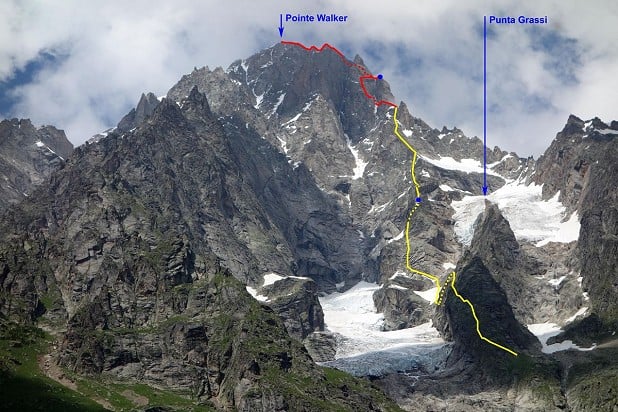
Michael (Micha) Rinn and I had climbed together on the BMC International Winter Meet in January and he was keen to join me for an attempt. Micha is a very safe and talented climber and we made a good team. We set aside a couple of weeks for the trip – initially climbing routes from the Envers des Aiguilles and Torino huts so we could acclimatise.
The route went very smoothly. What surprised us most was the quality of the rock – whenever you reached up there was another perfect hold waiting for you! The most exciting climbing took place after we’d joined the Tronchey Ridge late on the second day. The route climbs the steep front face of the Second Tronchey Tower and then traverses right below the Third Tower. We expected ledges here, but instead it was smooth unprotected slabs that were wet with snow banked up above. The belay was poor and Micha led a full 50m rope length before coming back saying he couldn’t make the final moves because the slabs were covered in ice. There was no place to stop and put on crampons, so Micha had to repeat the entire traverse in crampons so he could deal with the ice at the end. It was getting dark too, so a pretty tense time for both of us, but it was an outstanding lead by Micha. We bivouacked immediately afterwards on top of the Second Tower!
Overall the route is 1600m long and in terms of scale it has few parallels in the Mont Blanc Range. The South-West Spur of Punta Baretti that I climbed with Duncan Tunstall in 2009 is roughly comparable because this has 1200m of rock climbing on top of a 400m ice climb approach. Diamond Ridge felt most like the South-East Ridge on Mount Asperity in the Canadian Coast Mountains that I climbed with Dave Hesleden in 1997. This is 1600m in length and also took two bivouacs (although the descent was far more complex).
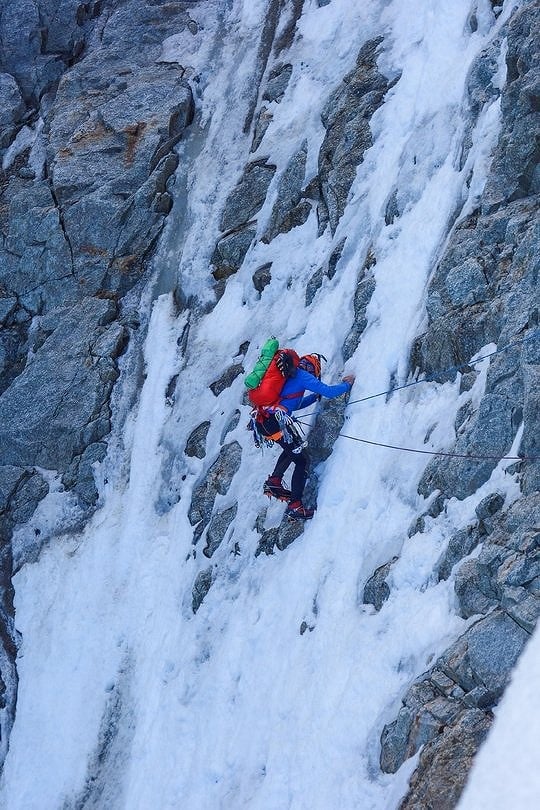
In winter, spring and autumn there is clearly considerable potential for mixed climbing all over the range. Andy Parkin has been doing this for years and people like Matt Helliker, John Bracey and some of the top French climbers are taking up the charge. Summer is a little different – climate change and glacier recession has made some routes and faces dangerous and difficult to access, but I believe there is still considerable potential for new climbing especially on the Italian side of the range.
The Alps in summer has always had a consumer feel to it – there are many guides taking people up the classic routes and many folk enjoy the bolt-protected rock climbs. This is absolutely great, but in the rush to neatly package everything, a lot of great mountaineering opportunities are simply passed by and not even thought about. Sure, the great mountaineering objectives like the Peuterey Integrale are still highly sought after, but many of the less well known peaks and routes are rarely travelled.
There are more British climbers climbing new routes than you might expect. In 2013 I gave a lecture about climbing new routes in the Mont Blanc Range at an Alpine Club Symposium and counted 28 climbers who had made first ascents in the Massif during the previous 10 years. Tony Penning, for example, has been regularly exploring the Italian side of the Range for the last 20 years or so, and has done more climbs there than anybody else.
The one place that has eluded me for new routes is Patagonia. I’ve been very fortunate to climb new routes in the Himalayas, Karakorum, Cordillera Blanca, Caucasus, Alaska and the St Elias Range. Dave Hesleden and I got within striking distance of the top of the Ragni Route on Cerro Torre in 2004 (we were just trying to climb the mountain, not do anything new) when we were shut down by a storm. We spent three days in a snow hole before descending in a hurricane. We lost a rope and had to make 40 short abseils, mainly from ice threads. The weather was so bad that the avalanches went uphill. Our clothes became sheathed with two inches of ice, our ice tool shafts turned the size of marrows and even karabiners ceased working. I didn't talk to anyone about it for years afterwards – in fact this is the first time I’ve ever written it down.
In September I’m heading off to South Georgia with a six-man climbing team including Stephen Venables, Crag Jones and Skip Novak. We’re planning to climb in the Salvesen Range which has only been visited a handful of times.
Alpine First Ascents
Below is a full list of Simon's first ascents further afield: 'I have included new routes in the Mont Blanc Range and also from the Coast Mountains in British Columbia, Canada as they form part of my alpine story. The Coast Mountains around Mount Waddington are just like the Mont Blanc area – beautiful granite and a similar altitude – except they are one and half times as big and almost nobody goes there. In terms of new route potential it is like climbing in the Alps in the 1950s!'
Aiguille Sans Nom (3982m)
North Pillar Direct, ED1 1000m
Mark Miller and Simon Richardson, 10-11 August 1982
A steep ice and mixed climb following icy gullies and grooves. My first alpine climb with the great Mark Miller. (Also known as the 1982 Route)
Aiguille du Jardin (4035m)
Crystal Tripper, TD+ 500m
Simon Richardson and Chris Cartwright, July 1995
A beautiful rock pillar on the south face. We then continued over the Grande Rocheuse to the Aiguille Verte – a brilliant way to tick three 4000m peaks!
Mont Blanc (4808m)
South Pillar Freney Direct, ED1 700m
Simon Richardson and Chris Cartwright, July 1995
This was the first complete ascent. The original ascent of the 'South Pillar' didn't actually climb the pillar, but traversed off below the steep central section and returned to the crest higher up.
Mount Asperity (3716m) – British Columbia
South-East Ridge, ED2 1600m
Dave Hesleden and Simon Richardson, 8-10 August 1997
A long-standing problem up one of the greatest structural features of the massif. The current guidebook enthusiastically describes our ascent as ‘one of the most tremendous demonstrations of high-standard alpinism the Range has yet witnessed…’ I think this is the only one of my alpine routes that has been repeated (Barry Blanchard and Mark Twight in 2005).
Serra V (3600m) – British Columbia
The Keyhole Route, D+ 200m
Dave Hesleden and Simon Richardson, 10 August 1997
Our descent from Asperity required traversing over Serra V, the most difficult summit in the Range.
Aiguille Sans Nom (3982m)
South-West Pillar, ED1 450m
Simon Richardson and Doré Green, 23-24 July 1998
The very steep rock pillar that springs from the depth of the Sans Nom couloir. We continued along the Sans Nom Ridge to the summit of the Aiguille Verte.
Mount Tiedemann (3848m) – British Columbia
The British Pillar, ED2 1450m
Doré Green and Simon Richardson, 4-6 August 2000
Probably the finest new alpine route I’ve done – a Walker Spur topped by a Tour Ronde.
Septentrion Spires (2823m) – British Columbia
Prometheus Unbound, 5.10+ 300m
Dore Green and Simon Richardson, 14 August 2000
I had always wanted to climb a new route on a steep alpine spire.
Mount Gilbert (3124m) – British Columbia
West Pillar, ED1 700m
Simon Richardson and Chris Cartwright, 11-12 August 2002
A beautiful mixed and rock climb on one of the most remote mountains in British Columbia.
Mount Zeus (2959m) – British Columbia
North-West Ridge, TD 500m
Simon Richardson and Mark Robson, 7-8 August 2005
A long alpine rock ridge.
Mount Remote (3038m) – British Columbia
East Face, Difficile 450m
Don Serl and Simon Richardson, May 2006
A fine snow couloir and the second ascent of the peak. Climbed with Don Serl, the ‘Andy Nisbet’ of Western Canada.
Punta Baretti (4013m)
South-West Spur, ED1 1200m
Simon Richardson and Duncan Tunstall, 7-9 September 2009
A 1200m rock spur situated above a 400m ice approach. A compelling line leading to the summit of the most remote of all the alpine 4000m peaks.
Mont Vert de Greuvetta
SW Spur Pte 2873m, Difficile 300m
Tom Prentice and Simon Richardson, 3 September 2012
A fun rock climb.
Pointe de la Fouly (3608m)
Scottish Route, TD 500m
Tom Prentice and Simon Richardson, 7 September 2012
A sustained pinnacled ridge in a remote corner of the Argentiere Basin.
Mont Vert de Greuvetta
SW Ridge Direct Pte 2810m, TD 300m
Tom Prentice and Simon Richardson 14-15 September 2012
A strong line up the skyline ridge when viewed from Val Ferret.
Aiguille du Chardonnet, Pte. 3660m
Pilier Alphonse Couttet, TD 350m
Tom Prentice and Simon Richardson, 18 August 2013
A steep pillar of perfect rock that is passed by countless skiers doing the Haute Route.
Mont Greuvetta (3684m)
Casa Dei Gracchi (House of the Choughs), TD+ 500m
Tom Prentice and Simon Richardson, 22-23 August 2013
This was an attempt on the central pillar (Il Pilastro Solitario) but we were diverted into the compelling corner-line bordering its left side.
Mont Greuvetta (3684m)
Il Pilastro Solitario (The Lonely Pillar), TD+ 500m
Tom Prentice and Simon Richardson, 31 July 2014
A beautiful climb up the crest of the central pillar on the vast East Face.
Mont Vert de Greuvetta
SW Face Pte 2825m, Difficile 300m
Simon Richardson and Roger Webb, 25 September 2015
An interesting rock climb up the central of the three Mont Vert de Greuvetta summits.
Grandes Jorasses (4208m)
Diamond Ridge, 5c 1600m
Michael Rinn and Simon Richardson, 28-30 July 2016
An elegant ridge line bordering the right side of the great Tronchey Wall.
- SKILLS: Top Tips for Learning to Sport Climb Outdoors 22 Apr
- INTERVIEW: Albert Ok - The Speed Climbing Coach with a Global Athlete Team 17 Apr
- SKILLS: Top 10 Tips for Making the Move from Indoor to Outdoor Bouldering 24 Jan
- ARTICLE: International Mountain Day 2023 - Mountains & Climate Science at COP28 11 Dec, 2023
- ARTICLE: Did Downclimbing Apes help Evolve our Ultra-Mobile Human Arms? 5 Dec, 2023
- ARTICLE: Dàna - Scotland's Wild Places: Scottish Climbing on the BBC 10 Nov, 2023
- INTERVIEW: Loki's Mischief: Leo Houlding on his Return to Mount Asgard 23 Oct, 2023
- INTERVIEW: BMC CEO Paul Davies on GB Climbing 24 Aug, 2023
- ARTICLE: Paris 2024 Olympic Games: Sport Climbing Qualification and Scoring Explainer 26 Jul, 2023
- INTERVIEW: Malcolm Bass on Life after Stroke 8 Jun, 2023



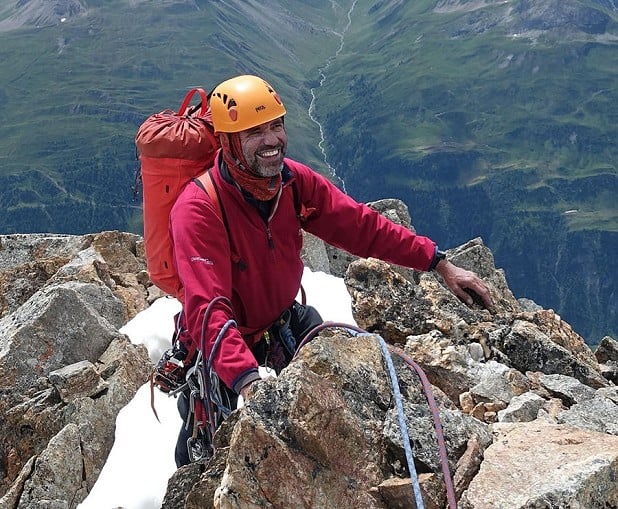
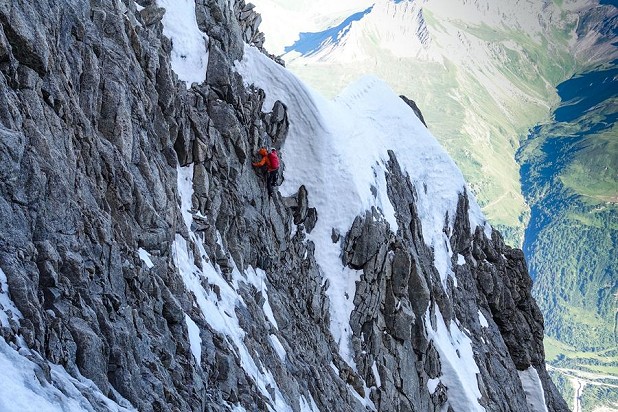
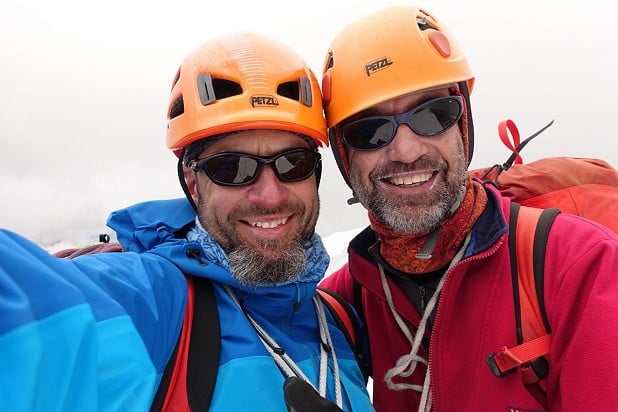





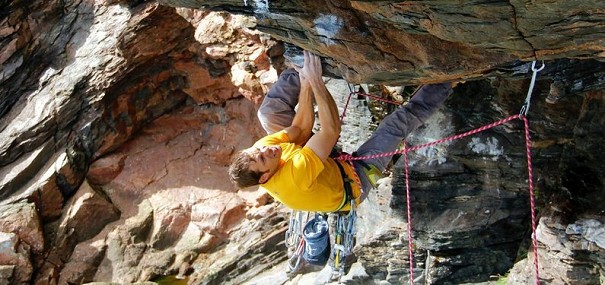
Comments